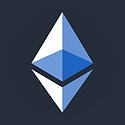As always in June, Incrementum AG (an independent asset management & wealth management company based in the Principality of Liechtenstein) published its annual “In Gold We Trust” report. We know that it was published one month ago; however, it took a while to dig through the 140-page text. Because it offers many interesting insights into the current global economy and the gold market, we provide a short summary for you today.
The main idea of the report is that there is a constant struggle between deflationary and inflationary forces. Since 2011, disinflationary forces have clearly dominated the market (think about the declines in commodity prices). According to the authors, this is why so many market participants have lost faith in gold. However, if the inflation trend reverses, excellent opportunities in inflation-sensitive investments such as gold will emerge. They point out that we now actually witness inflation, not consumer price inflation, which occurs always later, but rather asset price inflation. The authors believe that governments and their central banks will eventually tackle the increasing debt problem with money printing and inflation.
We doubt that inflation is the main driver (especially in the short term) of the price of gold (in 80s and 90s the price of gold was falling despite inflation). We argue that the price of gold reacts more to the faith in the current monetary system, and it is in a sense a reciprocal of the credibility of central banks. The authors agree with that, since they explain the disappointing gold performance in dollar terms last year, by pointing out that “at the moment, it appears as though faith in the omnipotence and infallibility of central banks is at an all-time high”. They also mention other factors behind the weak trend, such as strong disinflationary trends and the associated increase in real interest rates, the Fed’s tapering and declining money supply growth rate, rising opportunity costs due to a rally in stock markets, increase in risk-appetite, and rising expectations of a Fed’s rate hike.
Although the report seems to attach too much importance to the relationships between debt, inflation and gold, and to Asian demand, and it incorrectly predicted China’s official reserves (“we believe it is realistic that China now holds 4,000 to 6,000 tons”), it provides interesting information. For example, the global gold price (gold price not in US dollars, but in the trade-weighted foreign exchange value of the dollar) already entered a new uptrend in the autumn of 2014, gold exhibits clear seasonal trends with the second half of the year being the strongest, and the global gold trading volume amounted to 550,000 tons last year, which is roughly equivalent to 188 times annual mine production (this fact explains why the mine production does not drive the price of gold).
In the context of the FOMC July meeting and the Fed’s possible hike, they point out that although the federal funds rate and gold prices exhibit clear negative correlation, some periods can be observed during which the relationship collapses (indeed, three of the largest gold rallies of the post-1971 era occurred in rising nominal rate environments).
To sum up, the last edition of the In Gold We Trust report is a very lengthy, but interesting publication. Although we recommend skepticism on the authors’ long-term gold price target of $2,300 per ounce within three years (it seems that they have stuck to this target since 2007), they properly define gold as an “antithesis to paper money” and a monetary asset (not as just another commodity), realize gold’s safe-haven and portfolio diversification features, and cite convincing explanations for the relatively weak performance of the price of gold (in U.S. dollar terms) last year.
Recommended Content
Editors’ Picks
AUD/USD: Extra gains in the pipeline above 0.6520

AUD/USD partially reversed Tuesday’s strong pullback and regained the 0.6500 barrier and beyond in response to the sharp post-FOMC pullback in the Greenback on Wednesday.
EUR/USD jitters post-Fed with NFP Friday over the horizon

EUR/USD cycled familiar territory on Wednesday after the US Federal Reserve held rates as many investors had expected. However, market participants were hoping for further signs of impending rate cuts from the US central bank.
Gold prices skyrocketed as Powell’s words boosted the yellow metal

Gold prices rallied sharply above the $2,300 milestone on Wednesday after the Federal Reserve kept rates unchanged while announcing that it would diminish the pace of the balance sheet reduction.
Ethereum plunges outside key range briefly as US Dollar Index gains strength

Institutional whales appear to be dumping Ethereum after recent dip. Fed’s decision to leave rates unchanged appears to have helped ETH's price recover slightly. SEC Chair Gensler has misled Congress, considering recent revelations from Consensys suit, says Congressman McHenry.
The FOMC whipsaw and more Yen intervention in focus

Market participants clung to every word uttered by Chair Powell as risk assets whipped around in a frenetic fashion during the afternoon US trading session.